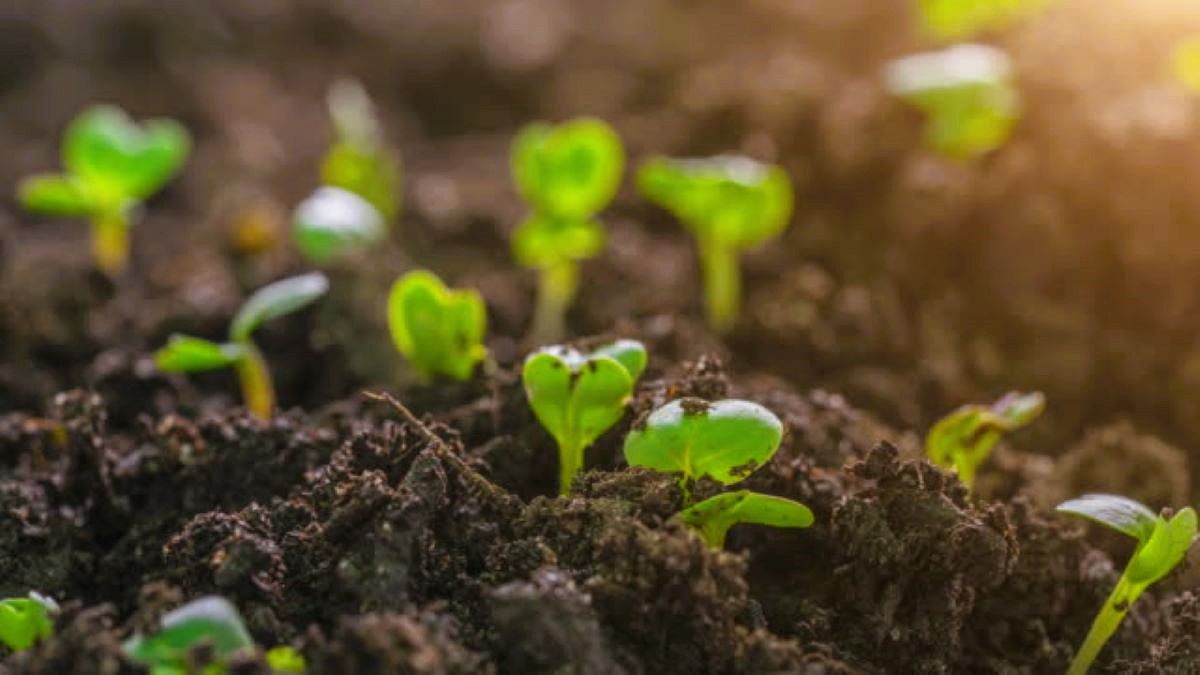
At the heart of sustainable farming lies the well-being of the soil. Yet, sticking solely to growing paddy and wheat year after year can upset the balance of nutrients in the soil. As a result, multi-nutrient deficiencies start appearing in the soil across states. For example, zinc, iron and potash deficiency in paddy and basmati; potassium, magnesium and boron deficiency in rice; and manganese deficiency in wheat. Considering the facts related to the declining biological health of the soil as well as human health, there is an urgent need to focus more on organic fertilizers such as green manures, farmyard manures, composts, bio-fertilizers, vermicompost etc., which not only improve the soil physical and biological health but also provide essential nutrients too.
Apart from this, salinity and sodicity problems of soils can also be minimized along with water-holding capacity can be enhanced. Due to a shortage of organic manures like FYM, farmers can decrease their dependence on chemical fertilizers through green manure. Particularly in Kharif crops, essential nutrients can be supplied efficiently, promoting sustainable agriculture. Sunhemp, jantar (Dhaicha), guara, moong, etc. can be grown in the state for green manure purposes. For example, Department of Agriculture and Farmers Welfare, Government of Punjab provides subsidies of up to 50 percent every year on green manure, especially Jantar seed.
Sunhemp: A Versatile Green Manure Crop
Sunhemp can be grown as green manure under various unfavourable circumstances like drought, salinity, acidity, etc. With green manuring soil physical health, nutrient availability and soil moisture retention capacity can be improved. It prevents leaching and loss of nutrients and creates access to deep soil layers. Its’ green manuring can be done after the harvest of wheat.
Two varieties of sunhemp released by Punjab Agricultural University are PAU-1691 and Narendra Sanai-1 which can be sown for green manure and give 4-6.5 tons and 3.8-6.2 tons of green manure per acre respectively after 45-60 days. The height of these varieties is about 160-220 cm. Irrigate the fields after harvesting rabi crops and sow 20 kg of sunhemp seed pre-soaked in water for 8 hours per acre between April and July. A day before paddy planting, bury the 6-8-week-old green manure crop in the soil. Applying 75 kg single superphosphate per acre to the green manure crop in soil with low phosphorus content eliminates the need for phosphorus fertilization to the subsequent paddy crop. By doing this, 25 kg of nitrogen fertilizer (55 kg urea) may be saved per acre.
Dhaincha: Green Manure for All Soil Types
Dhaincha crop can also be sown in all types of soil as green manure, but in Kallar soils dhaincha can be cultivated after checking the soil pH and after adding needed gypsum. PAU, Ludhiana has recommended an advanced variety of dhaincha i.e. Punjab Dhaincha-1. Like sunhemp, sow 20 kg of dhaincha seeds per acre with a drill machine at a distance of 20-22 cm from April to July. Where dhaincha is grown for green manuring, add the quantity of P2O5 recommended for rice to this legume and omit the application of phosphorus to the succeeding rice crop.
If phosphorus is applied to the previous rabi crop on the same soil, then the dhaincha crop does not need any phosphorus fertilizer, if otherwise, then only 75 kg of single superphosphate per acre should be applied. Green manure crops can be grown with about 3 to 4 irrigations in summer season and 25 kg of N (55 kg urea) per acre can be saved by applying 6 to 8 weeks old green manure. But in sandy-to-sandy loam soils, higher yield can be obtained by applying the full recommended amount of nitrogen fertilizer after green manuring. Green manuring with dhaincha also ameliorates iron deficiency in rice. Basmati crop requires much less urea fertilizer than paddy and if basmati is grown after green manure, no urea fertilizer is required.
Harvesting summer moong pods and incorporating the straw a day before paddy transplanting also serves as green manure. This practice not only enhances soil fertility but also allows a one-third reduction in paddy's urea fertilizer requirement.
Utilizing Green Manure for Crop Efficiency
The use of green manure is also very beneficial to get more yield of maize in the kharif season. Before planting maize, sow cowpea, sunhemp, or Jantar for green manure at the rate of 12, 20 and 20 kg seeds per acre respectively in the second fortnight of April. When the green manure crop is 50 days old, bury it in the field about 10 days before planting maize and let it decompose. Apply a full dose of nitrogen (50 kg N per acre) to get a high yield of maize in the maize-wheat system. It also augments soil health. Note that more than the recommended amount of nitrogen fertilizer is not a substitute for green manure. Similarly, applying 13 kg of nitrogen per acre along with green manure in the field before sowing of soybean can achieve full yield.
In organic farming, the use of any kind of chemicals is prohibited and green manure can be used as an alternative option in the field without tillage to increase the soil fertility. The use of leaf color charts is also particularly beneficial in fields where green manure has been applied. Finally, farmers are advised to grow green manure crops to reduce the unnecessary use of chemical fertilizers and also maintain the health of the soil.
(Information Provided by Ashok Kumar Garg, Gobinder Singh and Dhanwinder Singh, Department of Soil Science, PAU, Ludhiana, Punjab)











